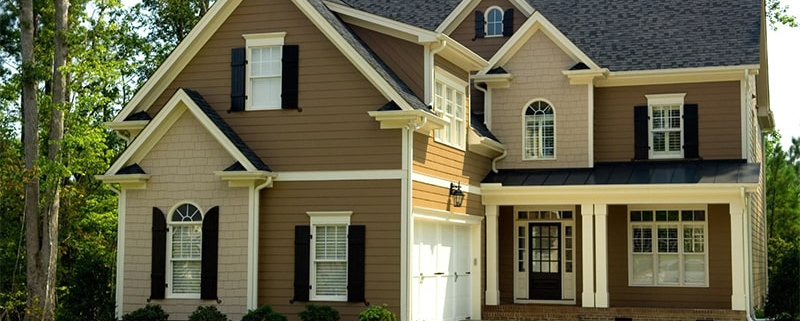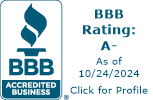Storm-Ready Roofing Tips for King of Prussia, PA
Storm season in King of Prussia, PA, often brings high winds, heavy rain, and hail that can put any roof to the test. In recent years, the region has faced more frequent extreme weather events, making preparation essential for every homeowner. Whether you’re getting ready for your first storm season or strengthening your defenses for another, following the right steps now can prevent costly storm damage later.
This guide provides homeowners across Montgomery County with practical, storm-ready roofing tips to inspect, protect, and maintain their homes before, during, and after severe weather.
Key Takeaways
- A well-prepared roof keeps your home safe from leaks, strong winds, and costly damage during storm season.
- Clean gutters and trimmed trees protect your roof, attic, and foundation from heavy rain and falling debris.
- Professional inspections before and after storms help find problems early and protect your home from further damage.
- Regular maintenance and certified repairs keep Pennsylvania roofs strong and ready for future severe weather.
Inspect Roof Components Before the Season
Before the storm season begins, take time to inspect your roof and make sure it’s fully ready.
Start with a visual check from the ground or with binoculars, looking for early signs such as curling or missing shingles, cracked flashing around chimneys and skylights, or soft spots along the roofline. Inside the attic, inspect for dark stains or daylight seeping through the roof surface.
These signs indicate weak spots that may not withstand high winds or heavy rain.
Identifying and repairing them early plays a critical role in storm protection and helps prevent costly storm damage during severe weather or extreme weather events common across Pennsylvania and the greater Commonwealth region.
Clean and Clear Gutters and Downspouts
Gutters are an essential part of your roofing system, and keeping them clean protects your home’s foundation. Remove leaves, sticks, and roof granules from the gutters to prevent clogs.
A blocked system can cause leaks or backflow beneath shingles, resulting in costly damage and mold growth in the attic. Trim trees and nearby landscaping to reduce debris buildup, especially before November storms.
Homeowners surrounded by trees can install gutter guards for additional defense and control during storm season. Maintaining clear gutters helps your roof withstand intense hail, wind, and rain events, preserving your property and peace of mind.
Reinforce Weak Points and Flashing
Flashing plays a critical role in defending against leaks and weather intrusion.
Inspect flashing at roof transitions—including valleys, dormers, vents, and skylights—for rust, separation, or broken seals. Apply roof-grade sealant where needed and secure any loose shingles. Replace missing nails with corrosion-resistant fasteners to strengthen the roof’s defense against high winds and heavy rain.
Reinforcing seals around chimneys provides extra storm protection and can prevent costly storm damage when hailstorms or tornadoes strike.
These simple storm-ready roofing tips help Pennsylvania homeowners protect their property through unpredictable weather events.
Schedule a Professional Pre-Storm Inspection
A professional inspection ensures your roof is fully prepared before storm season.
Serving the Keystone State and nearby regions, we offer certified inspections to detect loose drip edges, lifted shingles, underlayment gaps, and compromised flashing. These issues often worsen during severe weather or intense hail.
Schedule your inspection in late winter or autumn, before high winds or heavy rain arrive, to prevent costly damage later. Our team provides essential roofing services that help Pennsylvania homeowners safeguard their family and their property year-round.
How to Protect and Maintain Your Roof After the Storm Passes
Once the storm passes, take these steps to assess damage safely, document issues, and prevent further leaks.
Conduct a Safe Initial Roof Check
After a storm, inspect your roof carefully but safely.
Walk around your property and use binoculars to examine the roof surface for missing shingles, dented flashing, fallen trees or branches, and clogged gutters. Inside the attic space, check the insulation for moisture or discoloration.
If you notice loose shingles, sagging roof lines, or leaks, do not climb up—safety comes first. Instead, contact a professional to handle the trouble areas.
A thorough post-storm inspection helps protect your home’s structure and ensures long-term durability against the next round of severe weather.
Document Storm Damage for Insurance
When storms cause damage, collect detailed evidence for insurance purposes.
Photograph all visible storm damage to shingles, vents, flashing, and gutters—both exterior and interior. Take wide shots and close-ups, documenting the condition of your roof, attic, and surrounding space.
Save government weather alerts confirming the date of the storm and keep records of all inspection reports and repair invoices. These records help homeowners secure proper reimbursement and prevent delays in processing.
Organized documentation is an essential example of smart storm management and helps you regain control of repairs after unpredictable events.
Know When to Call a Certified Roofing Contractor
If leaks, exposed wood, or damaged flashing appear, it’s time to call a professional.
Dream Home Roofers—an Owens Corning Platinum Preferred Contractor serving King of Prussia, Philadelphia, Pittsburgh, and communities throughout Pennsylvania—provides trusted roofing repairs and replacements. Our certified contractors ensure each project meets manufacturer standards for materials and workmanship.
Hiring an expert ensures every repair strengthens your roof’s structure and helps your home withstand future storms, hail, or wind events across the region.
Plan Long-Term Maintenance for Storm-Resistant Roofs
Long-term maintenance plays an essential role in ensuring your home stays ready to handle extreme weather events.
Install impact-rated shingles, upgrade underlayment materials, and secure vents to improve durability. Trim trees regularly to prevent debris buildup and avoid damage to your roof during high winds. Clean gutters in autumn to prepare for storms and heavy rain.
These maintenance steps help prevent costly damage and extend the lifespan of your roofing system. For more tips on building a resilient home, refer to the U.S. Department of Energy’s storm-readiness checklist.
Regular maintenance and inspections after recent years of unpredictable weather help your roof withstand future challenges while safeguarding your family and property.
Professional Roofing Help for King of Prussia Homeowners
Pennsylvania has experienced more frequent storms in recent years, from intense hail to strong wind events across the Commonwealth. Whether you need a roof repair, replacement, or emergency inspection, we provide trusted expertise throughout the Keystone State—from Philadelphia suburbs to the northwest corridor.
Our business stands as a leading roofing contractor committed to protecting homeowners and their families from costly storm damage. As an Owens Corning Platinum Preferred Contractor, we use advanced roofing materials designed to withstand harsh weather and provide long-term peace of mind.
Contact us to schedule a free inspection and keep your roof ready to protect your home, family, and property year after year.
Frequently Asked Questions
How can I check roof damage without climbing?
Use binoculars from the ground to scan for missing shingles or dented gutters. Walk around your home to check for debris, and inspect attic ceilings for any dark or damp spots.
What should I do if a branch falls on my roof?
Avoid climbing up or removing it yourself. Call a professional to safely assess the structural integrity and prevent further roof damage or personal injury.
Are storm repairs covered by homeowners’ insurance?
Storm damage is typically covered, but policies vary. Document damage immediately, and contact your insurer to confirm your specific coverage before repairs begin.
Do I need to upgrade my roof after every storm?
Not necessarily. Minor damage can often be repaired, but repeated issues may warrant upgrades to shingles, flashing, or ventilation systems for better storm resistance.
How often should my roof be inspected?
Twice a year is ideal—once before storm season and once after. Inspections help catch problems early and ensure your roof performs under pressure.






